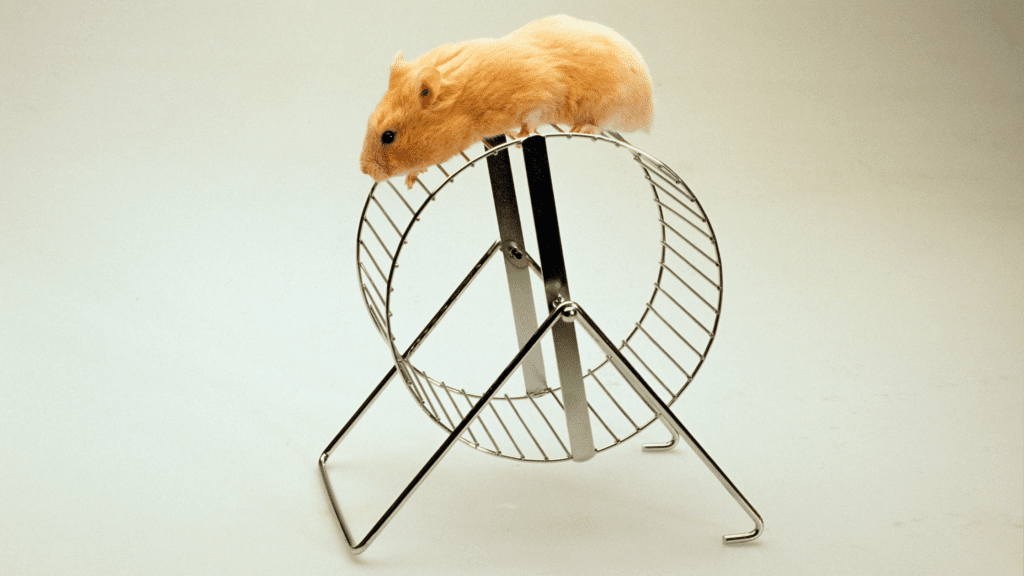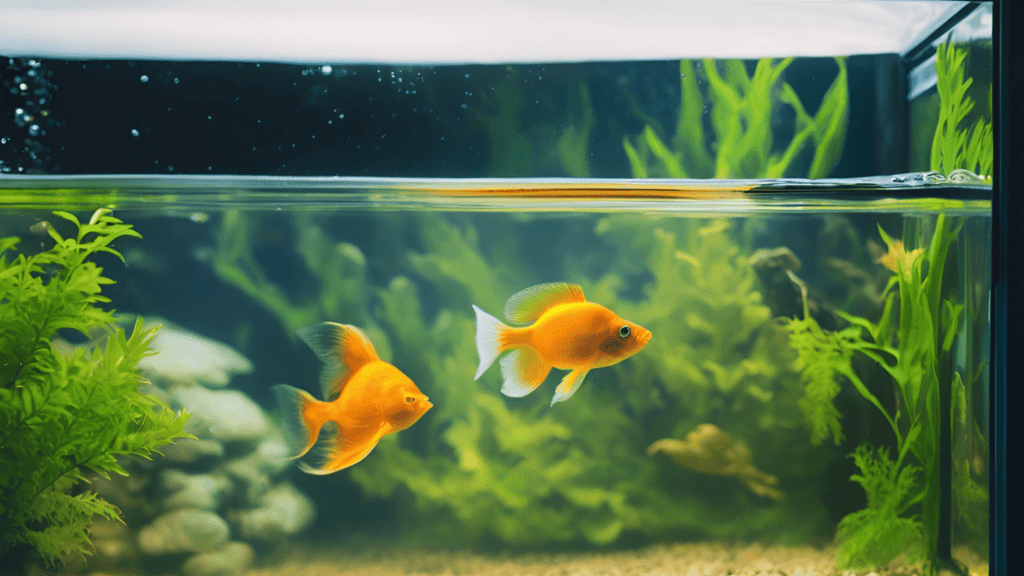Hamsters are popular pets that are known for their adorable looks and playful personalities. While they are relatively low-maintenance pets, it is important to provide them with an enriching environment to keep them happy and healthy. One key aspect of this is ensuring they get enough exercise.
In this article, we will explore a variety of creative ways to keep your hamster active, from the traditional running wheel to more unique options like ball pits. Whether you are a new hamster owner looking for advice or a long-time hamster enthusiast looking to switch up your pet’s routine, this article will provide valuable insights and tips to help keep your hamster entertained and active.
The Importance Of Exercise For Hamsters
Hamsters are beloved pets that many people enjoy keeping. However, it’s not enough to just provide them with food and water and keep them in a cage. Exercise is vital for their health and well-being. Hamsters are naturally active creatures that love to run, climb, and explore. Without exercise, they can become overweight and develop serious health problems. To keep your hamster healthy and happy, it’s important to provide opportunities for exercise.
In addition to physical health, exercise also plays a role in preventing boredom and anxiety in hamsters. When they are kept in a cage without stimulation or exercise, they can become anxious and develop unwanted behaviors such as chewing on cage bars or becoming aggressive towards their owners. By providing exercise and mental stimulation through toys, tunnels, and climbing structures, you can prevent these issues and help your hamster live a happy and healthy life.
Traditional Ways of Exercising Hamsters
Hamsters are a popular pet choice for many animal lovers, and like all pets, they require regular exercise to stay healthy and happy. Traditional ways of exercising hamsters involve providing them with a variety of activities and toys that simulate their natural habitat and allow them to explore and play.
Hamster Wheels
One of the most common ways to exercise a hamster is by providing them with a hamster wheel. Hamsters are natural runners, and a wheel allows them to get the exercise they need while staying in their cage. It’s important to choose a wheel that is the right size for your hamster and has a solid running surface to prevent any injuries.
Tunnels And Tubes
Another traditional way of exercising hamsters is by providing them with tunnels and tubes. Hamsters love to burrow and explore, so tunnels and tubes provide them with an opportunity to do so. You can find tunnels and tubes made specifically for hamsters at most pet stores or create your own using cardboard tubes and boxes.
Climbing Structures
Hamsters also enjoy climbing, so providing them with a variety of climbing structures, such as ladders and ropes, can also help them get the exercise they need. These structures can be placed in their cage or attached to the outside of their cage to give them more room to play.
Playpens
In addition to providing traditional exercise methods, it’s important to also give your hamster plenty of opportunities to explore and play outside of their cage. A playpen or designated play area can allow your hamster to stretch their legs and play with toys that they may not have access to in their cage.
It’s important to remember that every hamster is different, and their exercise needs may vary. Be sure to provide your hamster with a variety of activities and toys to keep them engaged and happy. Regular exercise and playtime will not only keep your hamster healthy, but it will also strengthen the bond between you and your furry friend.
Creative Hamster Exercise Ideas
Hamsters are lively and active creatures that require regular exercise to maintain their physical and mental health. However, constantly doing the same old exercise routine can become boring and repetitive, not just for your pet hamster but for you as well. If you’re looking for some fun and creative hamster exercise ideas, here are a few to get you started.
Hamster Ball Obstacle Course
Hamster balls are a great way for your furry friend to explore its surroundings while also getting some exercise. You can create an obstacle course using items such as cardboard tubes, tunnels, and ramps to make the experience even more exciting.
Hamster Wheel Relay Races
Most hamsters love to run on their exercise wheel, so why not turn it into a friendly competition? Invite a friend with a hamster over and race your hamsters on their respective wheels to see who can complete a certain number of laps first.
Agility Training
Just like dogs, hamsters can be trained to navigate through an agility course. You can use simple items like wooden dowels, tunnels, and even miniature jumps to create a fun course for your hamster to run through.
Staircase Climbing
If you have stairs in your home, you can create a fun workout for your hamster by placing its exercise ball at the bottom of the stairs and letting it climb up to the top. Just make sure to supervise your hamster during this exercise to ensure its safety.
Fetch
Yes, you read that right! Hamsters can actually be trained to play fetch. You can use a tiny ball or even a small piece of food as a reward when your hamster retrieves the object and brings it back to you.
Remember to always supervise your hamster during any exercise routine to ensure its safety. With these fun and creative hamster exercise ideas, both you and your furry friend will have a great time staying active and healthy together.
Building An Enriching Hamster Environment
Hamsters are small, adorable creatures that make for delightful pets. However, they are also active and curious animals that require plenty of mental and physical stimulation to remain happy and healthy. Building an enriching environment for your hamster is essential to ensuring their overall wellbeing.
Provide A Spacious Cage
To begin, the primary consideration when building a hamster environment is the cage. It should be spacious enough for your hamster to move around comfortably and have separate areas for eating, sleeping, and playing. Hamsters are natural burrowers, so providing plenty of bedding material such as wood shavings or paper-based bedding is a must.
Add Toys
Adding toys to the cage is another great way to provide mental stimulation. Hamsters love to chew, so providing chew toys like wooden blocks or sticks will keep them entertained while also helping to keep their teeth healthy. Hamster wheels are also a popular choice as they provide an excellent outlet for your hamster’s energy and help them stay fit.
Take Care Of Their Diet
In addition to toys and a spacious cage, a hamster’s diet should also be taken into consideration when building an enriching environment. Hamsters require a varied diet of pellets, fresh fruits, and vegetables. Providing different types of food in a rotating schedule can add variety to their diet, keeping them interested in their food and reducing the risk of nutrient deficiencies.
Spend Time With Hamsters
Lastly, hamsters are social creatures and enjoy interacting with their owners. Spending time with your hamster every day, such as holding and playing with them, will help build a stronger bond between you and your pet. This interaction will also help keep your hamster mentally stimulated and prevent boredom.
Building an enriching environment for your hamster involves providing a spacious cage with plenty of bedding, toys, and a varied diet. Spending quality time with your pet every day will also help build a strong bond and keep them mentally stimulated. By providing a comfortable and stimulating environment, you can ensure your hamster’s overall wellbeing and happiness.
Safety Considerations For Hamster Exercise And Play
Hamsters are popular pets that are known for their active and playful nature. As a responsible pet owner, it is essential to provide your furry friend with opportunities for exercise and play, while also ensuring their safety. In this article, we will discuss some important safety considerations for hamster exercise and play.
Choose the Right Exercise Equipment: Hamsters love to run, climb and explore. Providing them with appropriate exercise equipment such as a running wheel, tunnels, and climbing toys can keep them active and happy. However, it is essential to choose the right size and type of equipment suitable for your hamster’s size and breed to prevent any injuries.
Supervise Playtime: Although hamsters are small and agile, they can quickly get into trouble. It is crucial to supervise your hamster during playtime to prevent them from escaping or getting injured. You can set up a designated play area for your hamster, such as a playpen or a closed-off room.
Watch out for Hazards: Hamsters are curious creatures, and they will investigate anything that catches their attention. Keep an eye out for potential hazards, such as electrical cords, toxic plants, and small objects that can be swallowed. Removing such items from the play area will help prevent accidents.
Keep a Clean Environment: A clean environment is crucial for your hamster’s health and well-being. Regularly cleaning the exercise area and the hamster’s cage will prevent the build-up of bacteria and germs that can cause health problems.
Provide a Balanced Diet: A balanced diet is vital for your hamster’s overall health. Ensure that your hamster has access to fresh water and a variety of foods that provide the necessary nutrients. If you Overfeed your hamster can lead to obesity and other health problems.
Monitor Your Hamster’s Health: Keep an eye on your hamster’s behavior and look out for any signs of illness or injury. If you notice anything unusual, such as lethargy or loss of appetite, take your hamster to a veterinarian for a check-up.
Hamster exercise and play are essential for keeping your furry friend healthy and happy. However, it is crucial to take necessary safety precautions to prevent injuries and accidents. By following these safety considerations, you can provide a safe and enjoyable playtime for your hamster.
Conclusion
Hamsters are active pets that require mental and physical stimulation to thrive. Keeping them in a cage without any form of entertainment can lead to boredom, depression, and health problems. Fortunately, there are many creative ways to keep your hamster active, ranging from running wheels to ball pits. By providing your furry friend with a variety of toys and activities, you can ensure that they lead a happy and healthy life. Remember to always supervise your hamster during playtime and choose toys that are safe and suitable for their size and breed. With a little effort and creativity, you can give your hamster a fun and fulfilling life.
Frequently Asked Questions
How do I know if my hamster needs more exercise?
Hamsters are naturally active creatures, but there are some signs to look out for that indicate they may need more exercise. If your hamster appears lethargic, gains weight, or seems uninterested in exploring their cage, it could be a sign that they need more physical activity. Providing a variety of toys and activities in their habitat can help keep them engaged and active.
How much exercise does my hamster need each day?
The amount of exercise your hamster needs each day can vary depending on their breed, age, and overall health. On average, hamsters should have at least 1-2 hours of exercise outside of their cage each day. This can include supervised playtime in a secure and hamster-proofed area or using an exercise ball to roam around your home.
How can I make a ball pit for my hamster?
Making a hamster ball pit is easy and fun! Simply gather a shallow container, like a plastic bin or a child’s paddling pool, and fill it with soft, non-toxic materials such as shredded paper or hamster-safe wood shavings. Add some hamster-friendly balls or toys for added enjoyment.




